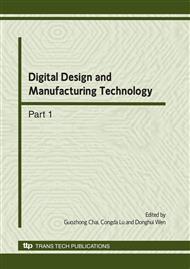p.417
p.422
p.427
p.432
p.436
p.441
p.446
p.451
p.455
Layered Manufacturing by Reverse Engineering-Principle and Application
Abstract:
Additive processes can be defined as layered manufacturing, based on the dispersed/accumulated principle, Layered manufacturing is directly transforming 3D CAD models to real objects, the reverse engineering of mechanism can be applied to layered manufacturing for production complex geometries for long-term consistency, and the analysis demonstrates the application of the reverse engineering fulfills the segments of design, production, inspection, test. The most notable advantage is the combination of digital technology and geometric model rebuilding technology.
Info:
Periodical:
Pages:
436-440
Citation:
Online since:
March 2010
Authors:
Price:
Сopyright:
© 2010 Trans Tech Publications Ltd. All Rights Reserved
Share:
Citation:


